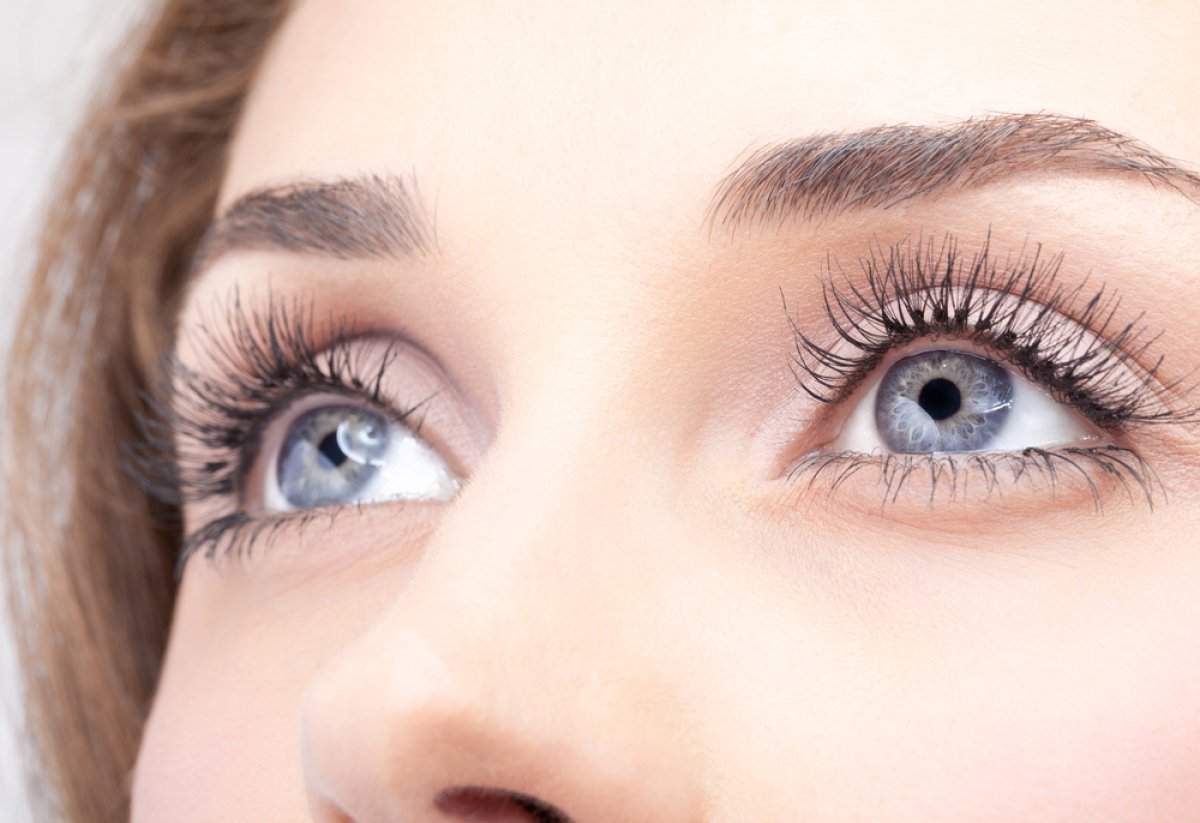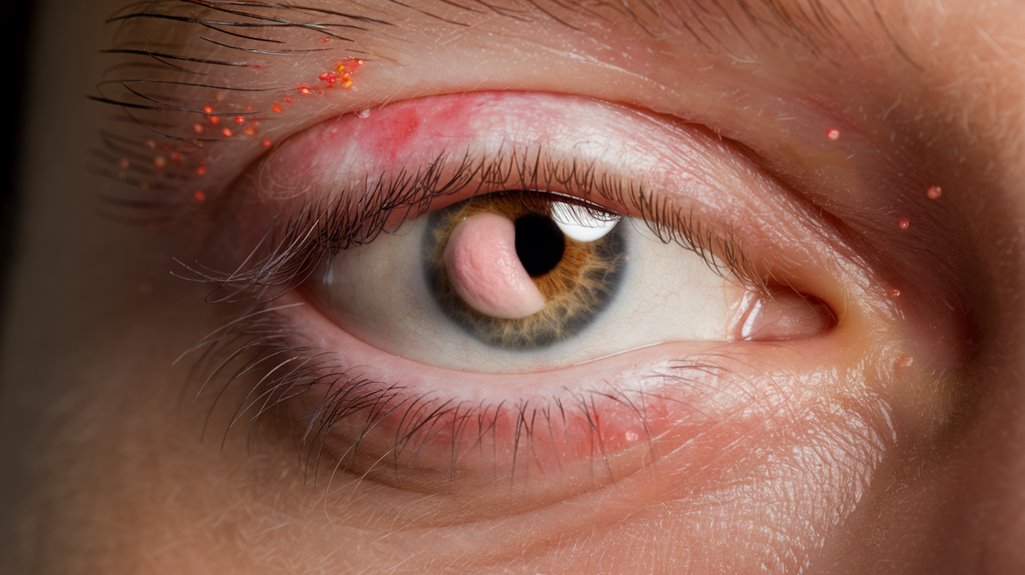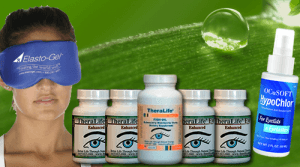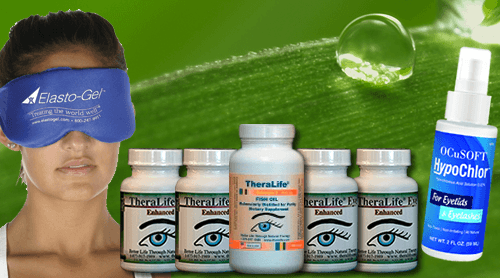Chalazion often occurs alongside chronic blepharitis due to ongoing inflammation and dysfunction in the Meibomian glands. These glands are crucial for maintaining tear film stability, and under chronic blepharitis conditions, they can become blocked or infected, leading to chalazion formation. Factors such as poor eyelid hygiene, oily skin, and environmental pollutants can exacerbate this issue by increasing inflammation and oil gland blockage.
TheraLife offers a range of products and solutions designed to benefit customers dealing with these eye conditions. Through natural and holistic approaches, TheraLife’s products aim to restore eye health and comfort. For instance, regular use of TheraLife’s supplements can support Meibomian gland function and reduce inflammation, contributing to the prevention of chalazion and blepharitis.
Preventive measures like regular eyelid cleaning and using warm compresses are essential. Understanding the intricate link between blepharitis and chalazion highlights the importance of addressing one condition to mitigate the other, paving the way for effective management. TheraLife’s offerings provide comprehensive support for individuals seeking relief from these eye issues.
Best Blepharitis Treatment From TheraLife
Add To CartKey Takeaways
- Chronic blepharitis often involves meibomian gland dysfunction, increasing the risk of chalazion due to blocked oil glands.
- Poor eyelid hygiene in chronic blepharitis patients can lead to chalazion by exacerbating gland obstruction.
- Chronic inflammation from blepharitis causes blockage in sebaceous glands, leading to chalazion formation.
- Excessive oil production in blepharitis patients contributes to the development of chalazion through gland clogging.
- Bacterial infections associated with blepharitis can trigger chalazion by causing glandular inflammation and blockage.
Understanding Chronic Blepharitis
Although often overlooked, understanding chronic blepharitis is crucial due to its persistent nature and potential complications.
Blepharitis symptoms frequently include red, itchy, and burning eyes, alongside watery eyes and sensitivity to light. Crusting of the eyelids in the morning, dry eyes, and foamy tears are telltale signs. Additionally, blurry vision and misdirected eyelashes may arise. Chronic blepharitis may also lead to the formation of chalazia, which are non-infectious lumps on the eyelid caused by clogged oil glands. Inflammatory cytokines such as IL-1beta and TNF-alpha play a significant role in the development of chronic blepharitis, contributing to its inflammatory nature.
The blepharitis causes involve several factors, including poor eyelid hygiene and excessive oil production from eyelid glands. Bacterial infections and allergic reactions also play significant roles in its development.
Risk factors such as dandruff, rosacea, and oily skin increase susceptibility. Allergies specifically targeting the eyelashes further contribute to this condition.
Understanding these causes and symptoms is crucial to managing chronic blepharitis effectively.
Chalazion Formation Mechanisms
When exploring chalazion formation mechanisms, you’ll find that these lesions are primarily caused by the blockage or infection of the oil glands along the eyelid line. Chalazion triggers include chronic inflammation, infection, or neoplasms, which obstruct sebaceous glands like meibomian and Zeiss. This obstruction leads to fatty secretions accumulating and leaking into the tarsal plate stroma. The leakage provokes a granulomatous response characterized by a lipogranulomatous reaction involving multinucleated giant cells and lipid vacuoles. Such a response is marked by the presence of immune cells, including neutrophils, lymphocytes, and macrophages. Chalazia account for 13.4% of benign eyelid lesions, highlighting their prevalence in relation to other eyelid conditions. In chronic blepharitis, inflammation exacerbates gland blockage, enhancing the risk of chalazion formation. Managing blepharitis is vital to prevent these recurrent lesions and their associated complications. Additionally, the use of effective eyelid cleansers can significantly reduce microbial load and ocular surface inflammation, offering improved outcomes in managing the condition.
Role of Meibomian Glands
Chalazion formation is intricately linked to the functioning of the meibomian glands. Understanding meibomian gland anatomy is essential as these glands secrete oils important for eye health. When you neglect eyelid hygiene, it disrupts meibomian gland secretion, leading to dysfunction. This dysfunction is a precursor to chalazion, often seen in chronic blepharitis. A staggering 74% of chronic blepharitis sufferers experience gland loss compared to 20% in normal patients, highlighting the impact on tear film stability. Chronic conditions like blepharitis lead to debris and scales on the eyelashes, which can clog the gland opening and contribute to chalazion development. Consider the following:
- Meibomian gland dysfunction affects tear film stability.
- Poor secretion quality can block the gland.
- Dysfunction increases tear osmolarity.
- Chronic blepharitis exacerbates gland issues.
- Proper eyelid hygiene mitigates dysfunction.
- Environmental factors like contact lens wear can exacerbate MGD symptoms, further complicating chalazion formation.
Inflammation and Blockage
You’re likely familiar with how blocked oil glands often lead to chalazion, primarily due to inflammation from chronic blepharitis.
This inflammation can result in the obstruction of the meibomian glands, which are essential for maintaining tear film stability. Chronic cases involving Demodex mites can exacerbate the inflammation, leading to more frequent occurrences of chalazia.
When these glands are inflamed, they can become prone to infection, causing further complications such as swelling and redness. Chronic blepharitis can increase the likelihood of recurring chalazia, necessitating consistent management and treatment.
Oil Gland Obstruction
Although oil gland obstruction primarily stems from clogged Meibomian glands, it’s a multifaceted issue that requires careful attention. You might notice obstruction symptoms such as inflammation and lump formation on your eyelid. The oil gland’s function is impaired when the oil becomes too thick or debris accumulates, blocking the gland’s opening. Chronic blepharitis exacerbates this by causing scales that further block these glands. Understanding the root causes is essential for effective management. Blepharitis is a chronic condition that is manageable but has no cure, often involving a cycle with meibomian gland dysfunction. Regular eye exams are recommended to monitor the condition and prevent further complications.
- Clogged Meibomian glands: Primary cause of chalazion.
- Poor eyelid hygiene: Inadequate makeup removal can lead to blockage.
- Thickened oil: Prevents smooth oil flow from glands.
- Debris accumulation: Dead skin or makeup clogs gland openings.
- Chronic blepharitis: Increases obstruction risk through scaling.
Meibomian Gland Inflammation
Addressing the multifaceted issue of oil gland obstruction, it’s important to focus on Meibomian gland inflammation—a condition that greatly contributes to eyelid health complications. Meibomian gland dysfunction, exacerbated by chronic inflammation, often results from hormonal changes, skin conditions, or medication use. This dysfunction manifests as blocked ducts, leading to dry eye symptoms and chalazion formation. Blepharitis commonly coexists with dry eyes due to lipid secretion deficiency from meibomian glands, further aggravating meibomian gland dysfunction. Techniques like Meibomian gland expression and LipiFlow can restore gland function and alleviate symptoms. Effective management involves eyelid hygiene, applying moist heat, and using appropriate antibiotics or hypochlorous acid. Understanding these dynamics is essential for preventing chronic eyelid issues.
Common Risk Factors
Several risk factors contribute to the formation of chalazion, primarily stemming from underlying chronic blepharitis. You should be aware of how lifestyle choices and environmental exposures can elevate your risk. Poor lid hygiene and smoking are significant lifestyle-related risk factors that can exacerbate meibomian gland dysfunction, leading to chalazion. Additionally, vitamin A deficiency and dyslipidemia can compromise the gland’s function, increasing susceptibility. Exposure to air pollutants is another environmental factor that can obstruct the meibomian glands. Understanding these risk factors is essential to mitigating chalazion formation. The symptoms of chalazion typically include a painless bump on the eyelid, which can sometimes cause mild irritation or blurred vision if it grows large enough. Regular eyelid hygiene prevents recurrence, and maintaining healthy meibomian gland function is crucial for prevention.
Best Blepharitis Treatment From TheraLife
Add To CartEffective Management Strategies
When managing chalazion and chronic blepharitis, it’s crucial to explore both conservative and medical management strategies. Effective therapies begin with warm compresses applied for 10 to 15 minutes, multiple times daily, softening obstructed oils and aiding drainage. This first-line approach aligns with established management guidelines. Regular eyelid hygiene is essential for preventing the recurrence of chalazions and maintaining overall ocular health. It is important to note that while a chalazion can often resolve on its own within four weeks, some cases may require additional intervention if symptoms persist. For more severe cases, antibiotics, particularly tetracyclines, become necessary, especially when blepharitis coexists with rosacea. However, these aren’t indicated for uncomplicated chalazia. Steroid injections, such as triamcinolone acetonide, offer inflammation reduction and can accompany surgical drainage for persistent cases. Advanced treatments like IPL and IRPL provide non-invasive options, delivering high-energy light pulses that unclog glands and reduce inflammation. These strategies collectively offer a thorough approach to managing these conditions effectively.
Prevention Techniques
To effectively prevent chalazion formation, prioritize regular eyelid hygiene by incorporating gentle scrubs and frequent cleansing routines. Utilize warm compresses consistently to soften blocked oil glands and facilitate drainage, applying them several times a day as part of your regimen. Since blepharitis is a common cause of chalazion, managing this underlying condition can significantly reduce the risk of recurrence. Regularly using Avenova eyelid cleanser after warm compresses can help maintain cleanliness and control bacterial overgrowth. For persistent cases, consider consulting a specialist about intralesional corticosteroids, which can reduce inflammation and expedite resolution.
Regular Eyelid Hygiene
Incorporating regular eyelid hygiene into your daily routine is essential for preventing conditions like blepharitis and chalazion. Start by washing your hands thoroughly. Use a solution of warm water and non-irritating shampoo, or a recommended lid scrub. Accumulation of dirt, debris, and foreign matter on eyelids and lashes necessitates careful cleaning to maintain eye health. Close one eye, and with a clean washcloth, gently scrub the eyelashes and eyelid edges. Rinse with cool water, then repeat for the other eye. This process removes debris and oil, reducing infection risks. Incorporating omega-3 fatty acids into your diet can also help reduce inflammation associated with blepharitis. To enhance your eyelid hygiene routine:
- Remove all eye makeup before sleeping.
- Avoid eyeliner on eyelid edges.
- Replace old eye makeup products to avoid contamination.
- Consider omega-3 supplements for symptom management.
- Consult a doctor if hygiene alone isn’t sufficient.
These steps support long-term eyelid health.
Warm Compress Usage
Warm compress usage serves as a cornerstone in preventing and managing eyelid conditions like chalazions and blepharitis. By applying a warm compress, you can reduce inflammation and facilitate the drainage of clogged oil glands.
Opt for a washcloth or a microwaveable mask, guaranteeing the temperature is safe. The warm compress benefits include promoting healing and reducing discomfort.
Frequency is key; apply the compress for 5-10 minutes, 2-4 times daily. Post-application, gently massage the eyelid to enhance drainage. Consistent use leads to resolution within days to weeks.
Maintain cleanliness to prevent bacterial spread. Avoid squeezing the chalazion, and direct gentle massage toward the eyelid edge. If symptoms persist, consult a healthcare provider for further guidance.
Intralesional Corticosteroids Application
Though warm compresses play an essential role in managing chalazions, intralesional corticosteroid application offers a high success rate for cases that don’t respond to conservative methods.
With treatment efficacy exceeding 90% in some studies, this approach is particularly effective for early, soft chalazia. The procedure involves directly injecting corticosteroids into the lesion, suppressing inflammatory cells and promoting resolution.
It’s a straightforward, non-surgical option that suits children and anxious patients.
Benefits include:
- High success rate, over 90% in certain studies.
- Effective for early-stage, soft chalazia.
- Non-surgical, suitable for children.
- Reduces inflammatory cell production.
- Promotes lymphatic absorption and resolution.
However, chronic or firm chalazia might require surgical interventions like incision and curettage.
Latest Research Insights
While research continues to evolve, recent findings underscore the significant link between blepharitis and chalazion. Studies demonstrate that blepharitis diagnosis often precedes chalazion symptoms, establishing a clear connection. Recurrent chalazia correlate with chronic blepharitis, highlighting the need for consistent management. Recent insights suggest low serum vitamin A levels might contribute to chalazion development, though further exploration is warranted. Conservative treatments, such as warm compresses and eyelid hygiene, remain effective for many.
| Aspect | Insight |
|---|---|
| Blepharitis Diagnosis | Precedes chalazion symptoms |
| Chalazion Symptoms | Linked to chronic blepharitis |
| Treatment Effectiveness | Warm compresses, eyelid hygiene |
| Vitamin A Research | Potential link to chalazion |
| Recurrent Chalazia | Associated with chronic blepharitis |
Continued research aims to refine treatment strategies, ensuring ideal outcomes for patients.
Best Blepharitis Treatment From TheraLife
Add To CartFrequently Asked Questions
Can Diet Influence the Risk of Developing a Chalazion?
Yes, your diet can influence the risk of developing a chalazion. Nutritional deficiencies, particularly in vitamins A, C, and E, can weaken your immune system, affecting your inflammation response.
Consuming foods high in unsaturated fatty acids or cholesterol might increase risk. Conversely, a diet rich in leafy vegetables, nuts, and whole grains supports immunity.
Avoid excessive alcohol, sugary, and fatty foods to maintain eye health and reduce chalazion risk.
Are There Any Home Remedies for Chalazion in Chronic Blepharitis?
Think of your eyelids as a garden.
Warm compresses are like gentle rain, coaxing blocked oil glands to flow freely. You should tend to them with eyelid hygiene, much like nurturing plants, using cleansers to clear debris and prevent new blockages.
Aloe vera provides soothing relief, while tea tree oil acts as a natural barrier against unwelcome invaders.
Regular care and attention keep your garden, or eyelids, healthy and thriving.
How Does Stress Impact Chalazion Occurrence in Blepharitis Patients?
You might find that stress considerably impacts chalazion occurrence in blepharitis patients.
Stress exacerbates blepharitis by increasing inflammation and weakening the immune system, therefore raising chalazion risk. Poor sleep and hormonal changes due to stress also contribute.
For effective management, focus on stress management techniques like meditation to enhance emotional wellbeing.
This approach helps reduce flare-ups and improves your overall eye health, minimizing chalazion development in blepharitis sufferers.
What Are the Long-Term Effects of Recurrent Chalazion?
You’re likely aware that recurrent chalazion can lead to significant long-term complications.
Repeated inflammation might cause scarring on the eyelid, leading to cosmetic issues and potentially impacting eyelash growth.
Orbital cellulitis is another risk, arising from untreated infections.
The pressure from large chalazia can even induce astigmatism by altering the corneal shape.
Managing recurrent inflammation through consistent treatment and monitoring is essential to mitigate these complications effectively.
Is There a Genetic Predisposition to Developing Chalazion?
Imagine your genes as a library, where certain books detail your susceptibility to chalazion.
Genetic factors can play a significant role, and familial patterns often reveal these predispositions. Studies using Mendelian randomization have shown that specific gene variations, acting like hidden chapters, influence your risk.
These genetic markers, intertwined with gut microbiota, paint a complex picture of why some families face chalazion more frequently than others.
Conclusion
TheraLife products are designed to support and benefit individuals dealing with chronic blepharitis and related conditions, such as chalazion formation. Their approach focuses on enhancing the function of the meibomian glands, reducing inflammation, and addressing gland blockage. This is crucial as inflammation and blockage are common in conditions like chronic blepharitis, leading to complications including chalazion.
TheraLife offers a variety of solutions, including natural supplements and lifestyle guidance, aimed at improving eye health and preventing recurrences. Their products are developed based on the latest research insights, providing a comprehensive management strategy. By integrating prevention techniques and innovative treatments, TheraLife equips customers with effective tools to combat these persistent ocular challenges.





